
OpenAPI makes it really easy to generate documentation for your API. There are a number of open source and paid solutions that make it easy to generate documentation for your API. To determine the best solution for your needs, we researched and compared the best open source and paid OpenAPI documentation generators.
At the end, we give our opinion on which solution is best for you depending on your requirements and current setup.
Open Source
If you have the bandwidth to set up and maintain your own OpenAPI documentation generator, then you should consider using one of the following open source solutions. Open Source solutions are always free and usually highly customizable.
Slate

| GitHub | Docker |
|---|---|
 |  |
Slate has the most GitHub stars out of documentation generators for OpenAPI. Its UI/UX is unique in that it puts everything on a single page.
Pros
- Git-based
- Free and open-source
- Great community support with large number of GitHub stars
- Generates static code Snippets for making API requests
- Supports custom documentation with Markdown
- Supports custom code snippets
Cons
- Requires technical resources for installation and maintenance
- Support for custom layout is limited
- Compared to other solutions, the feature set is limited and design is less modern
Swagger UI
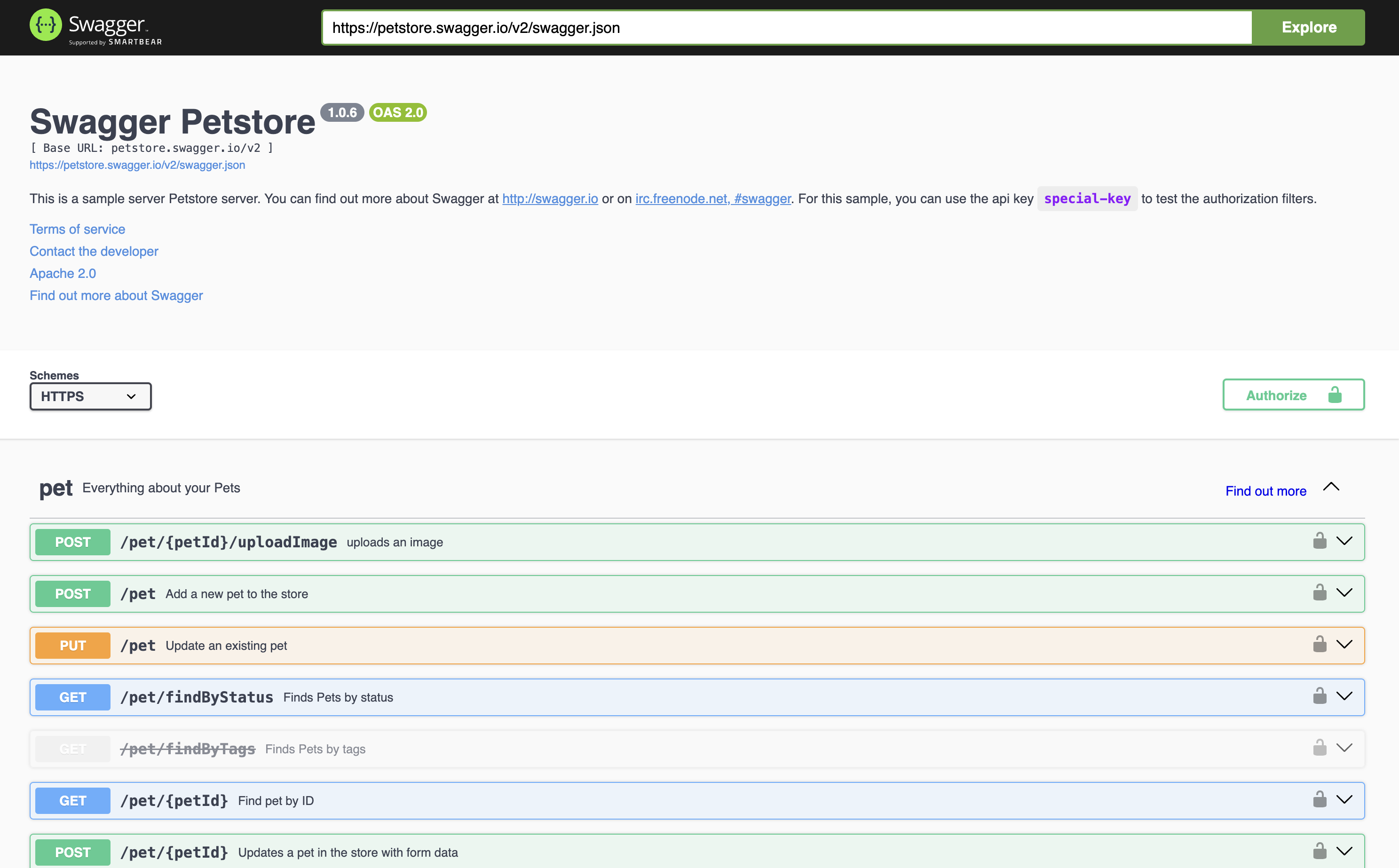
| GitHub | NPM |
|---|---|
 |  |
Swagger UI is one of the earliest and most well-known OpenAPI documentation generators. OpenAPI (formerly known as Swagger), is open-sourced by SmartBear and is the most popular OpenAPI documentation generator.
Pros
- Integrates with SwaggerHub
- Integrates with Spring Boot
- Integrates with Express.js
- Great community support with large number of GitHub stars
- Interactive API requests in the browser
Cons
- UI/UX is a little out-dated
- Does not support custom documentation
Redoc
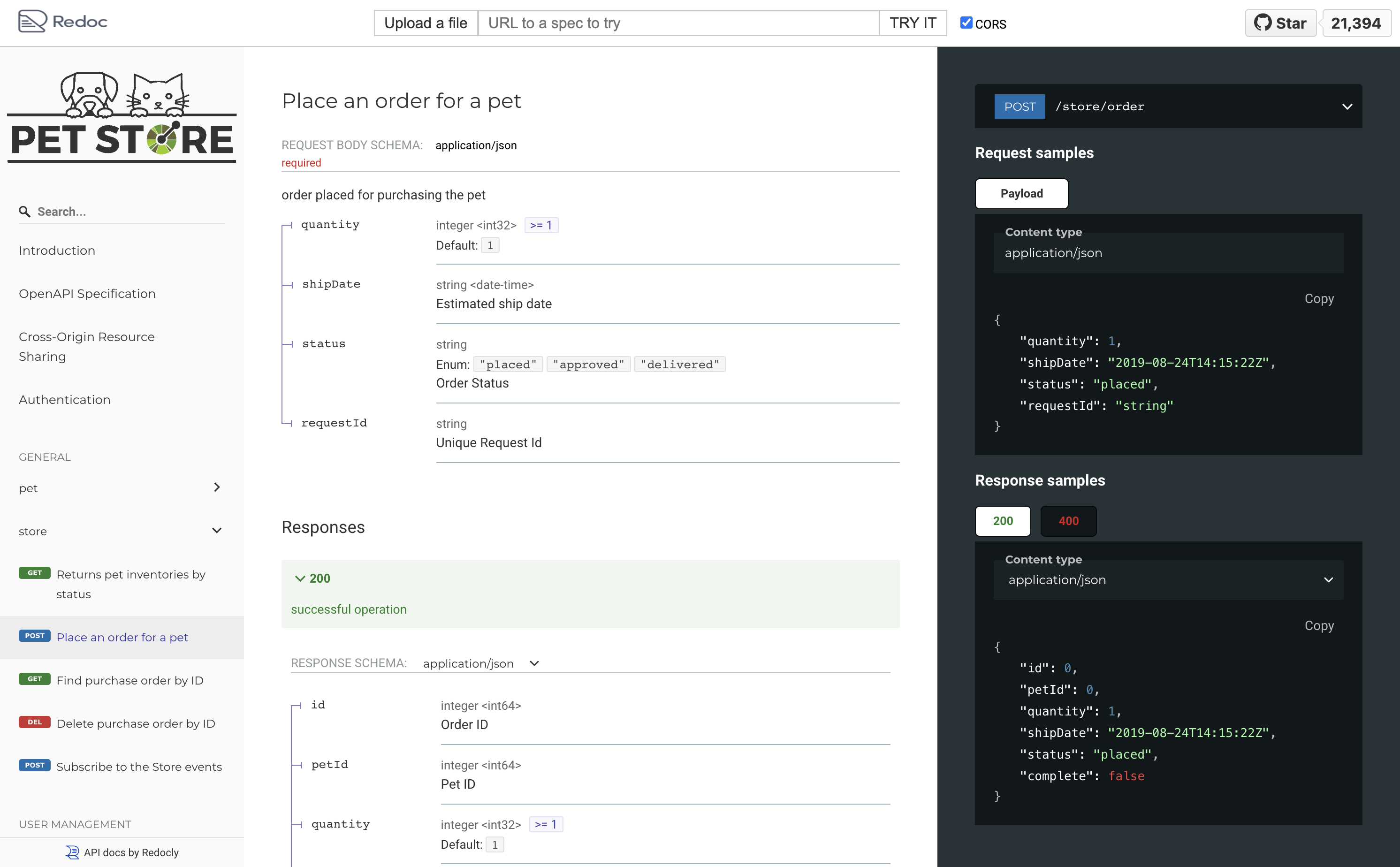
| GitHub | NPM |
|---|---|
 |  |
Redoc is another beautiful static documentation generator for OpenAPI open-sourced by Redocly.
Pros
- Supports OAS 3.1 Webhooks
- Git-based
- Can be integrated into your existing website
- Supports custom code samples through a vendor extension
- Lots of configuration options
- Helpful customization options through various vendor extensions
Cons
- UI/UX is a little clunky looking
- Does not support custom documentation
- Does not support making API requests from the browser
- Limited feature set compared to the paid version (see differences here)
Elements
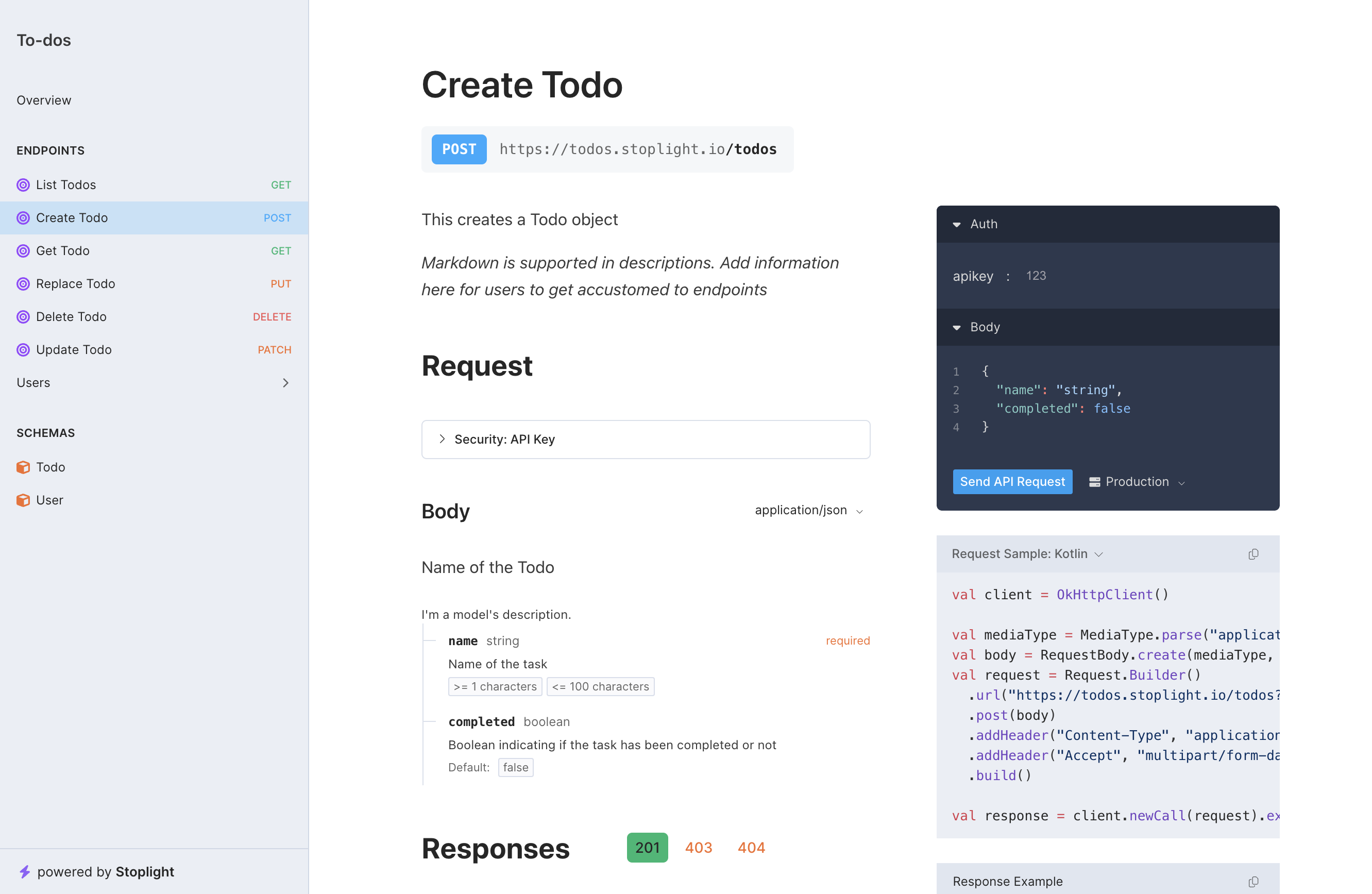
| GitHub | NPM |
|---|---|
 |  |
Elements is a documentation generator for OpenAPI open-sourced by Stoplight.
Pros
- The best UI/UX of open source OpenAPI documentation generator
- Generates documentation for schemas
- Automatically generates code samples for making API requests
- Can be integrated into your existing website
- Allows for custom documentation
- Supports making API requests from the browser
- Integrates with Stoplight Platform
Cons
- Not as popular as other open source solutions
- Requires technical resources for installation and maintenance
- Support for custom layout is limited
Plugins for Docusaurus
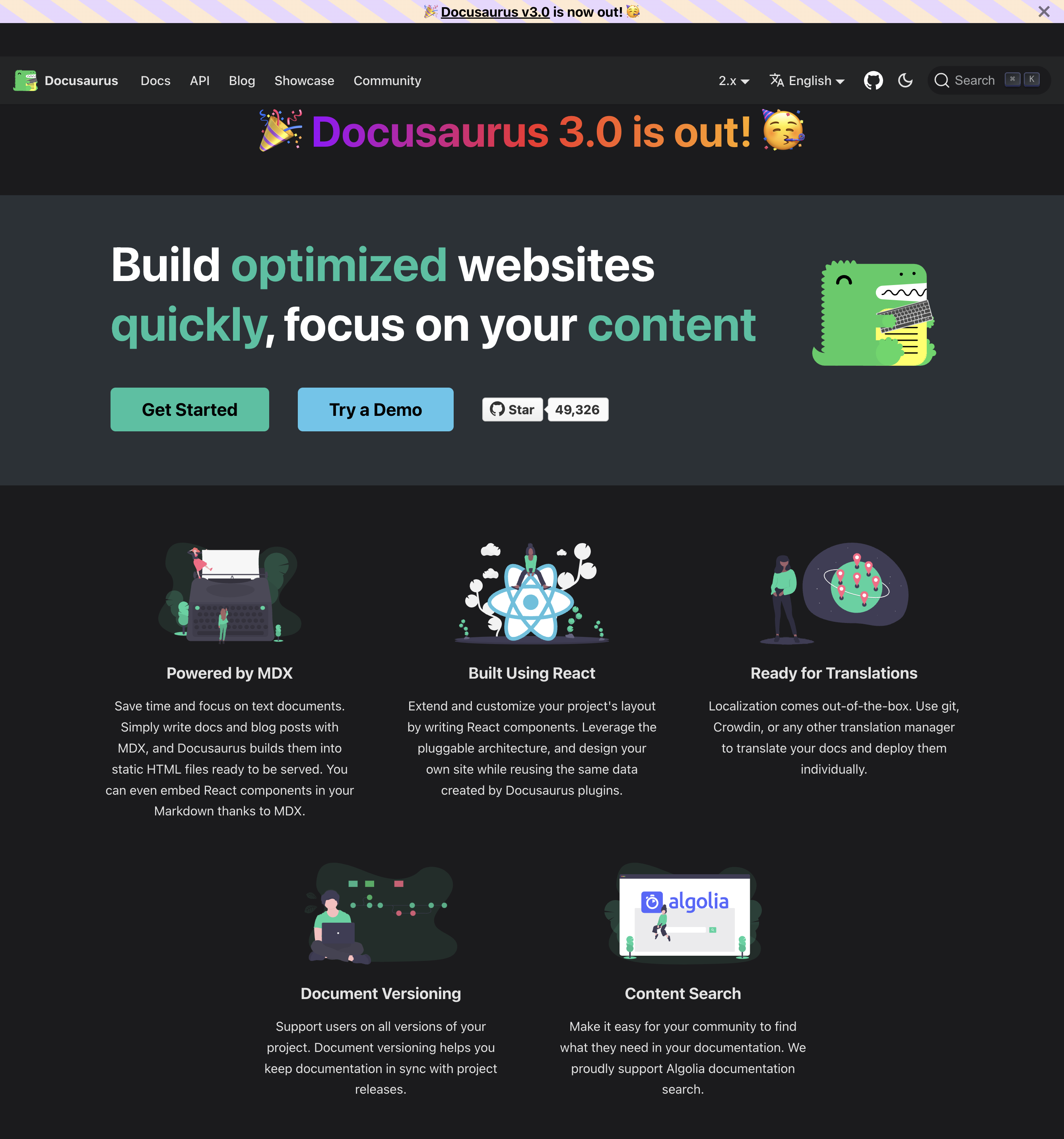
| Plugin | GitHub | NPM |
|---|---|---|
| docusaurus-openapi |  |  |
| docusaurus-openapi-docs |  |  |
Docusaurus is an open-source, static site generator developed by Facebook's team, built on React, and suitable for teams publishing documentation.
If you are already using Docusaurus, there are two plugins for Docusaurus for generating OpenAPI documentation:
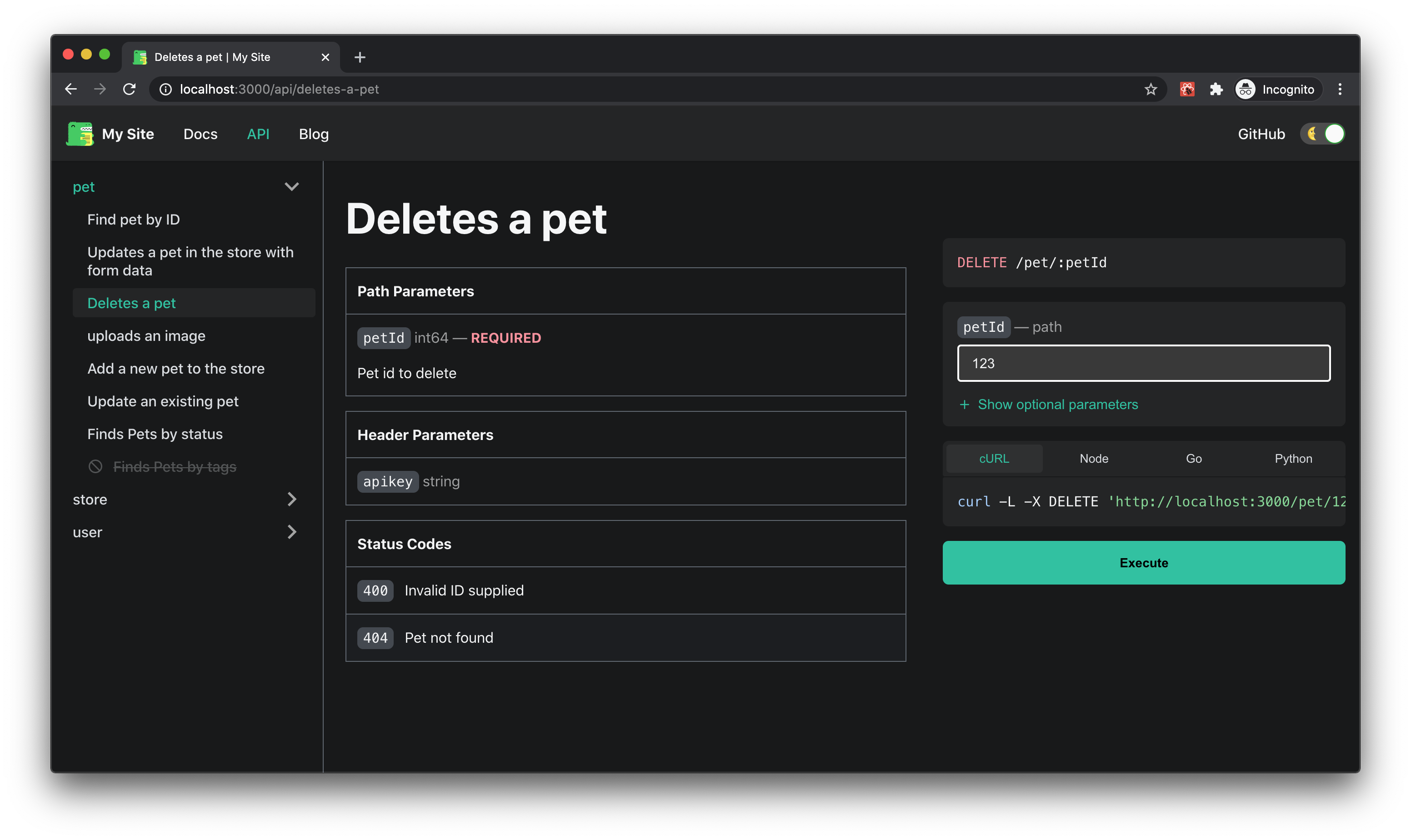
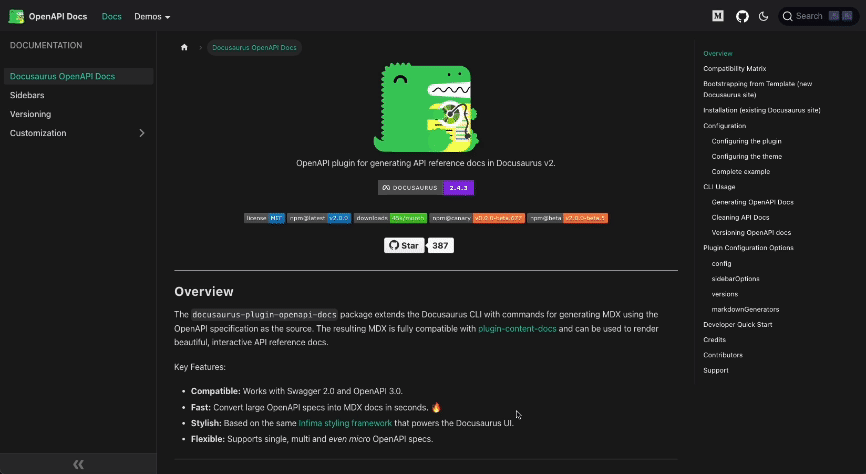
Both plugins are nearly equivalent in terms of feature set. We personally like
the UI/UX of docusaurus-openapi-docs better but docusaurus-openapi has more
stars on GitHub. We suggest you try both and see which one you like better or simply works
better for your OpenAPI specification.
Pros
- Git-based
- Free and open-source
- Highly customizable
- Configurable layout/navigation
- SEO optimized
- Supports blog posts
- Supports MDX and JSX.
- Generates static code Snippets for making API requests
- Great search integrations with Algolia or offline search
- Rich Plugin Ecosystem
- Supports multiple versions of your API
- Supports custom documentation with Markdown
Cons
- Requires technical resources for installation and maintenance.
- Can be costly in terms of technical expertise to setup and maintain
- UI/UX for OpenAPI plugins is not as polished as paid solutions
- Needs a secure proxy to enable interactive requests in the browser
Scalar
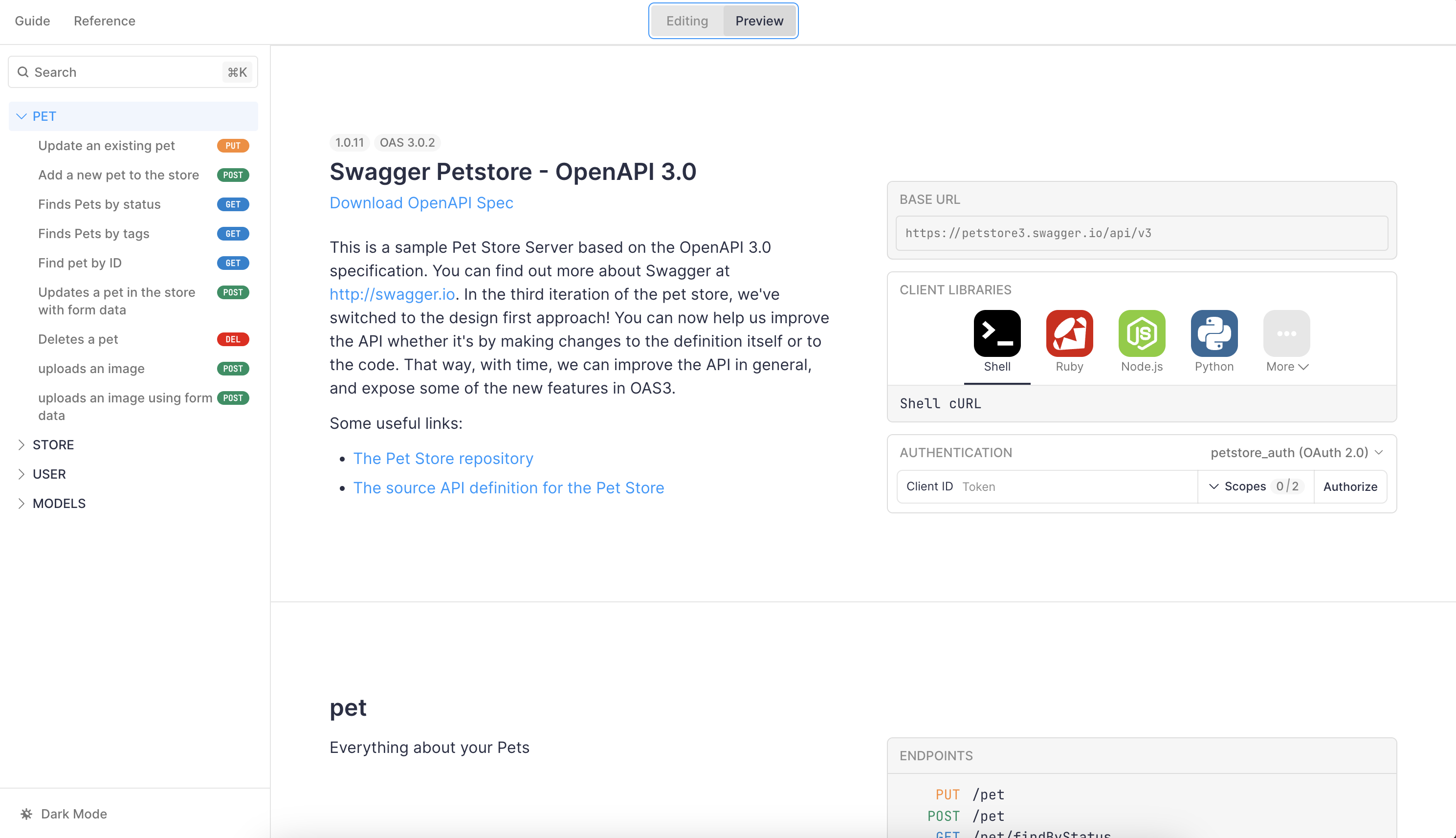
| GitHub | NPM |
|---|---|
 |  |
Pros
- Great UI
- Great DX
- Supports custom styling
- Supports making API requests from the browser
- Supports integrations with many popular frameworks
- Has Swagger/OpenAPI Spec editor
Cons
- Immature
- Has seat-based pricing for cloud hosting
Paid (Monthly Fee)
If the open source solutions are not suitable for your needs, then you should consider using one of the following paid solutions. Paid solutions are usually hosted and maintained by the company that created them. This means that you don't have to worry about installation and maintenance. Paid solutions are usually more feature rich and have better UI/UX than open source solutions.
Redocly

Redocly is a paid solution for generating OpenAPI documentation. Redocly is developed by the same company that open-sourced Redoc.
Pros
- Managed solution
- Great search capabilities
- Allows making API requests from the browser
- Great UI/UX
- Integrates with GitHub
- Embeddable into your existing website
- Supports custom documentation with extended Markdown features
- Supports step-by-step tutorials with embedded API request examples
- No per-user monthly fee
Cons
- Basic plan is limited
- Expensive if you just want a custom domain
Pricing
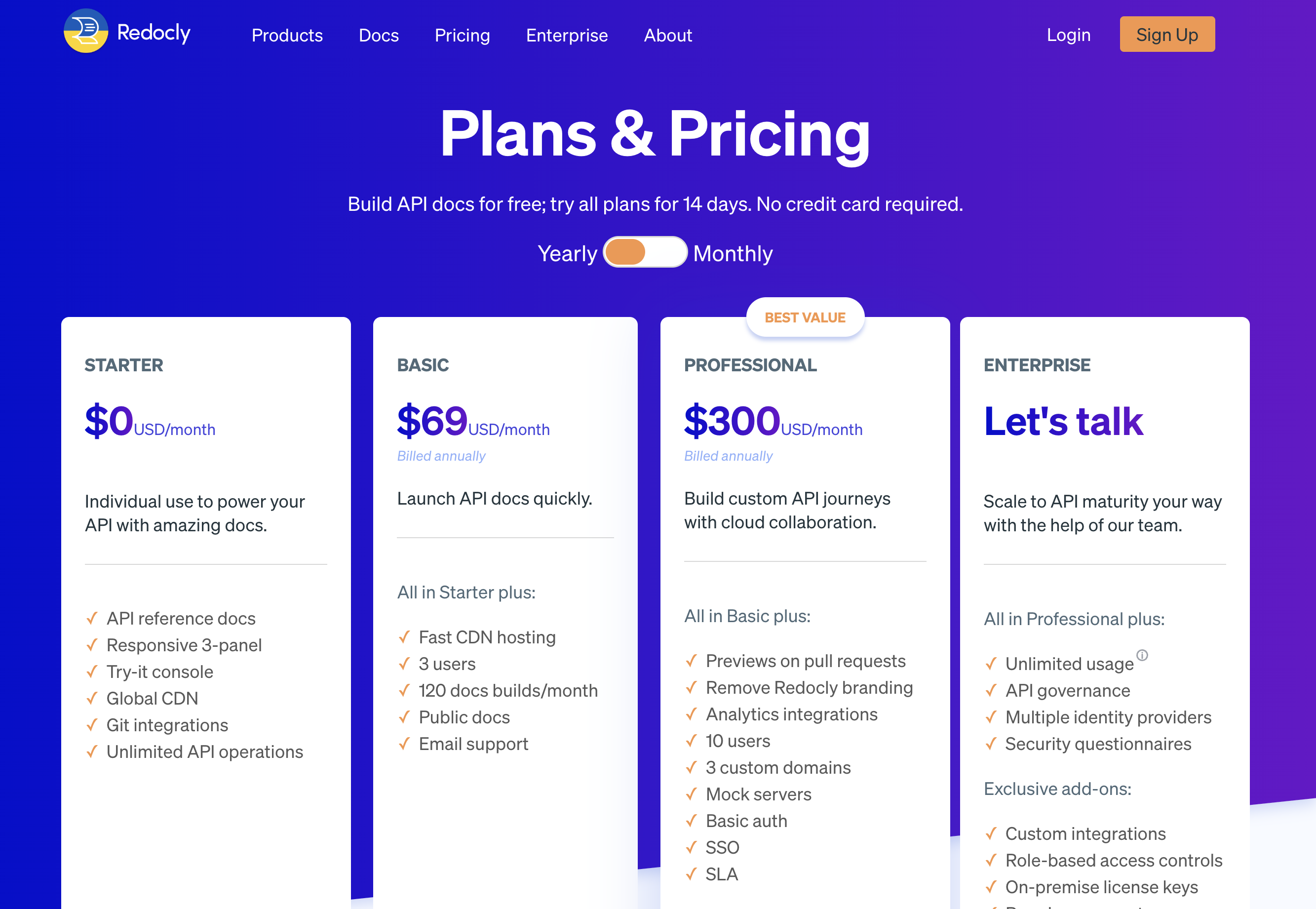
Stoplight
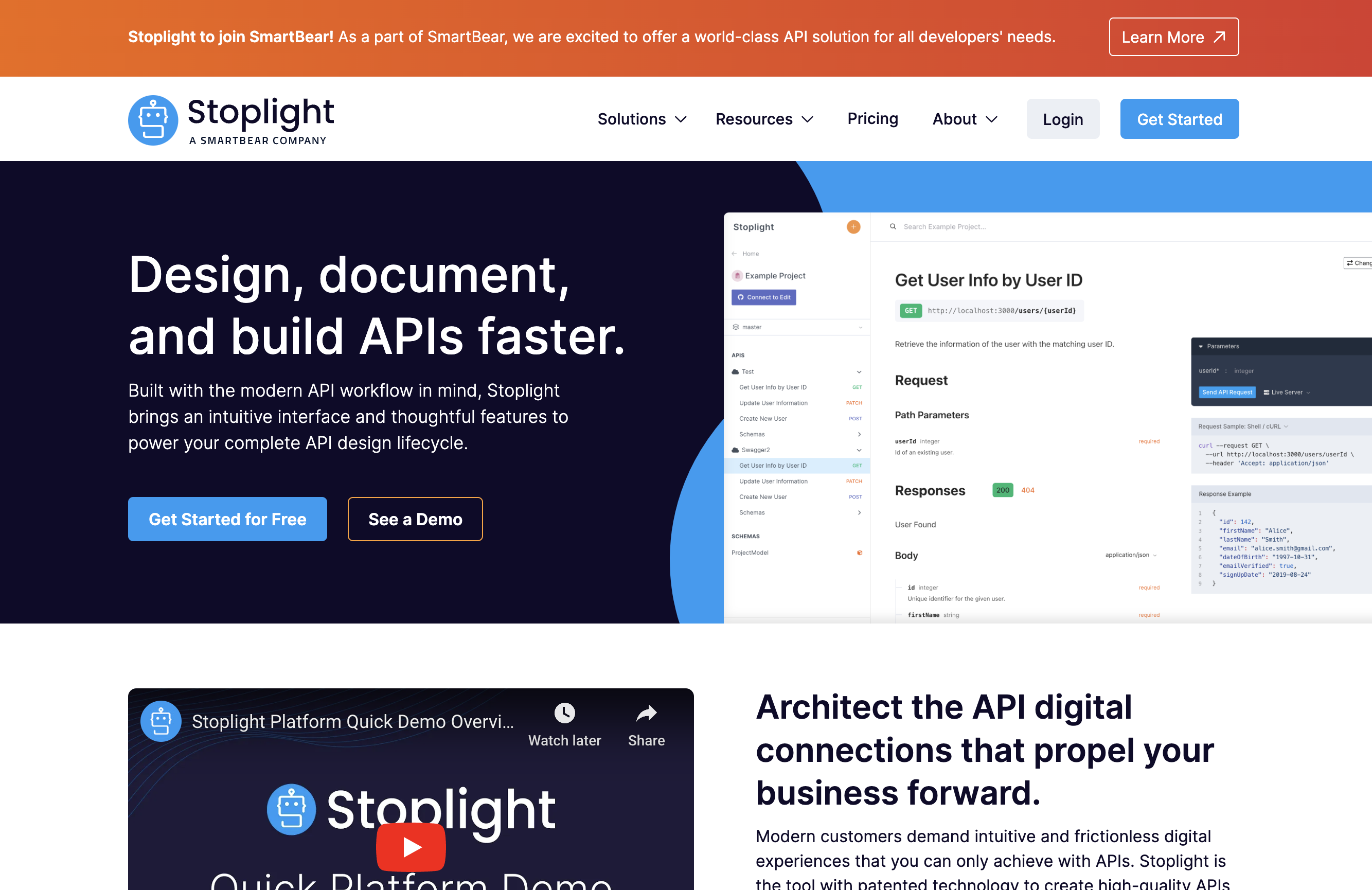
Stoplight is developed by the same company that open-sourced Elements. It is a much more comprehensive solution than Elements in that includes a number of other tools for API developers to design and build APIs together.
Pros
- Interactive API Documentation
- Managed solution
- Custom domains
- Code generated snippets for making API requests
- Custom documentation with Markdown
- Can make API requests from the browser
- Git-based
- Custom theming
- Search capabilities
- Great UI/UX
- Decent Basic/Startup Tier Pricing
- Google Analytics integration
Other Pros
Stoplight is not just a documentation generator, it is a full suite of tools for API developers so we are listing some of the other pros here.
- SSO
- Collaboration features
- Great API Editor
- Mock servers powered by their open source Prism tool
- OAS validation powered by their open source Spectral tool
Cons
- Can be pricy if you have a large team
Pricing

ReadMe
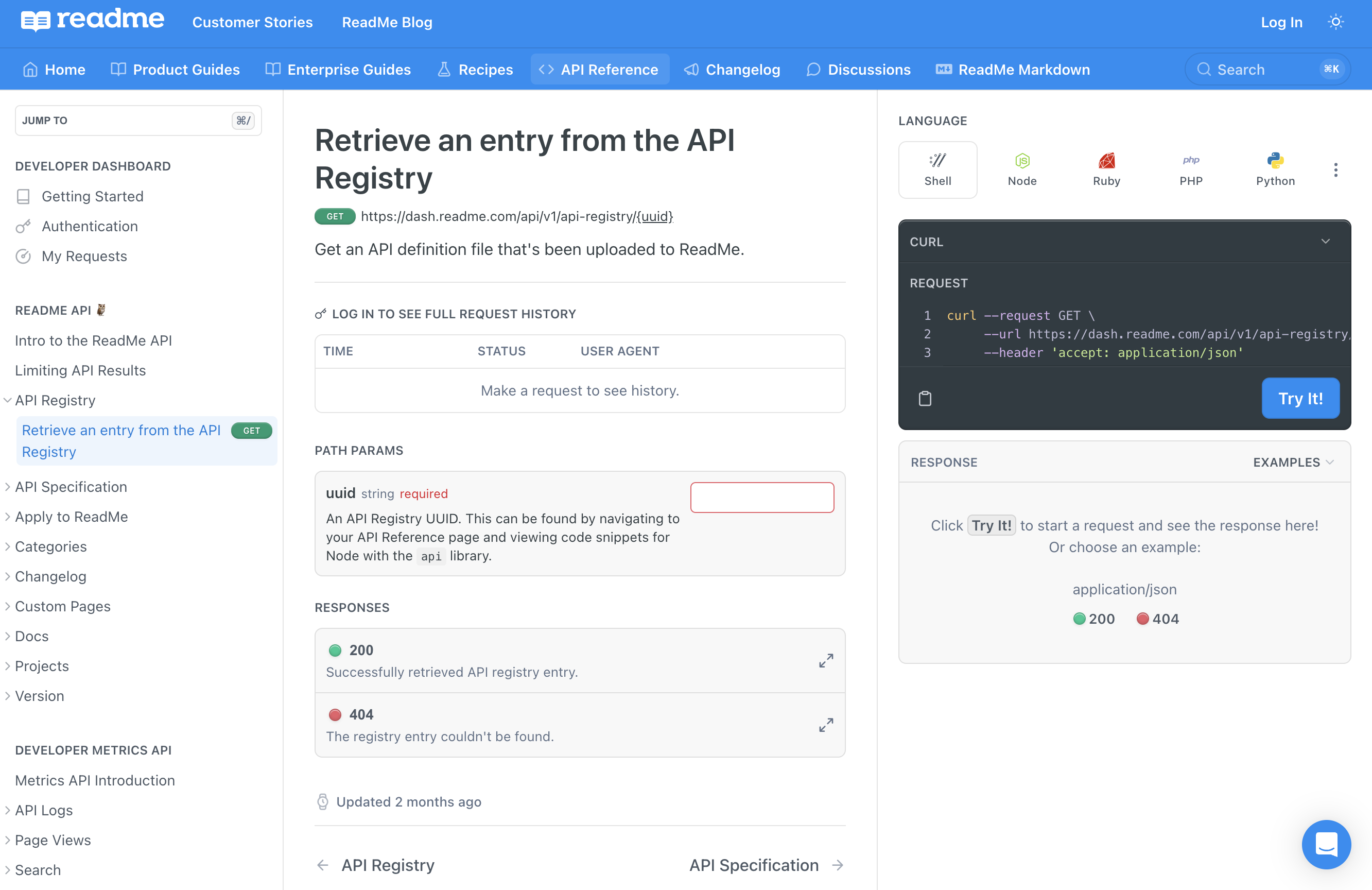
We have personally seen a lot of companies use ReadMe for their API documentation. They seem to be the most mature documentation provider with more of a focus on general public documentation rather than just API documentation.
Pros
- Mature solution
- Can make API requests from the browser
- Managed solution
- WYSIWYG editor
- Custom domains
- Code generated snippets for making API requests
- Startup tier is good for most use cases
- Analytics Support
- AI search capabilities
- Lots of features for making APIs easy to consume
- API Key Dashboard
- API Versions
- Changelogs
- Recipes
- GitHub action support for CD of OpenAPI documentation
Cons
- Expensive
- WYSIWYG editor can be limiting for advanced users
- No Git-based workflow for custom documentation
Pricing
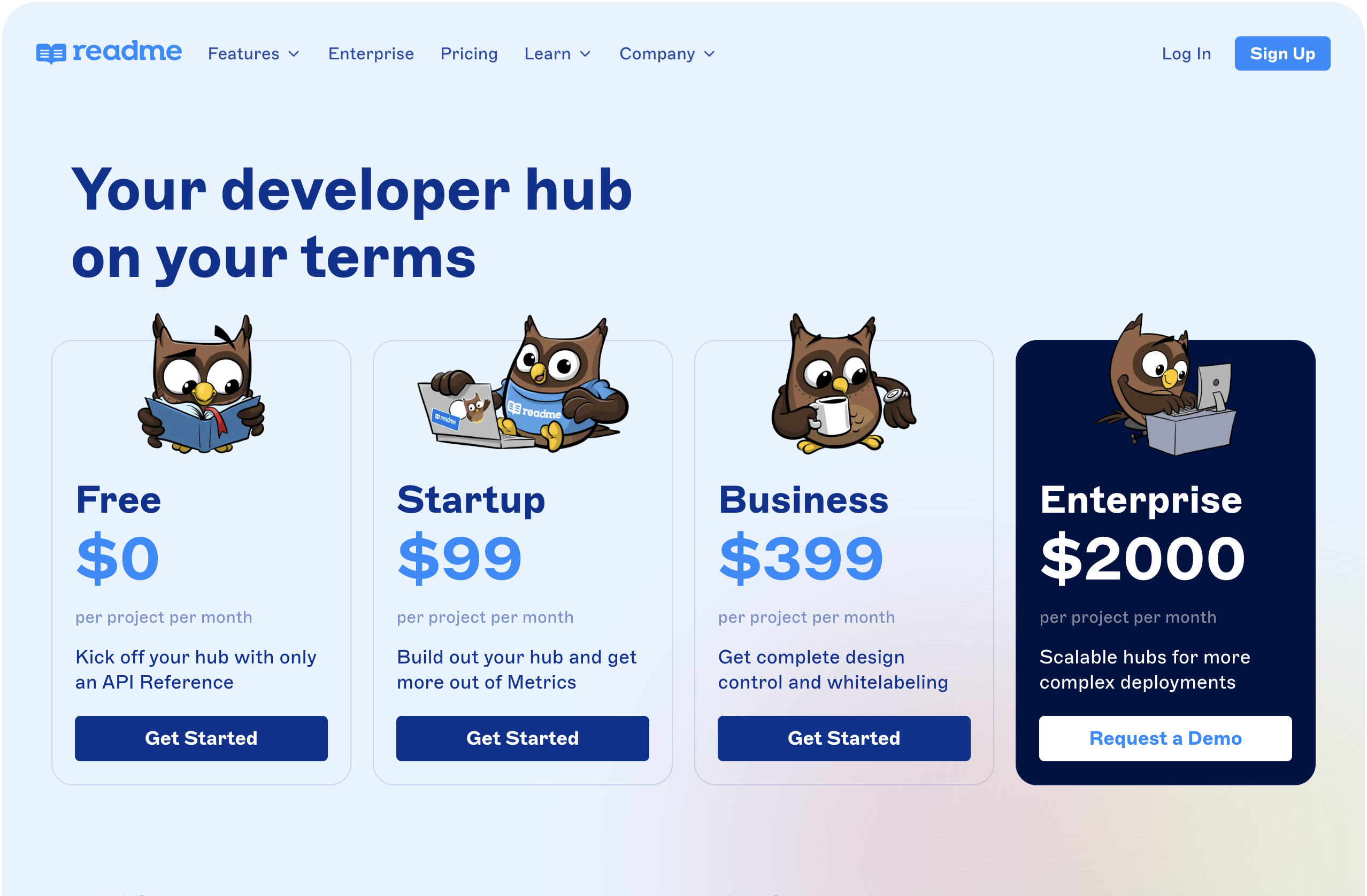
Konfig
As the developers of Konfig, we are excited to include our product in this list to showcase its capabilities and benefits.

Konfig makes it easy to generate beautiful and interactive OpenAPI documentation for your API. Konfig also generates SDKs for your API to make it easy for your users to consume your API.
We believe that Konfig offers a compelling advantage over other solutions for API developers by also generating SDKs that natively integrate into your API documentation.
Pros
- Also generates SDKs that natively integrate into your API documentation
- Beautiful UI/UX for OpenAPI documentation
- Can make API requests from the browser
- Managed solution
- Custom domains
- Fast client-side search
- Code generated snippets for making API requests
- Google Analytics Support
- GitHub action support for CD of OpenAPI documentation
- Configuration for styling
- Git-based workflow
Cons
- No WYSIWYG editor for custom documentation
- Immature relative to other solutions
Pricing
To learn more, you can schedule a demo here and we will be happy to walk you through the product and answer any questions you may have about the product and pricing.
Other Paid Solutions
Here are other paid solutions that we did not include in this comparison.
Our Opinion
If you are looking for a free and open source solution and are open to using a newer solution, then we recommend using Elements as it has the best UI/UX and is the most feature rich of the open source solutions. Its also open-sourced by Stoplight which is a company that has built a lot of other great tools for API developers such as Prism and Spectral.
If you are already using a server framework like Spring Boot or Express, then you should consider using Swagger UI as there are already integrations for these frameworks.
If you are already using Docusaurus, then you should consider using one of the two plugins.
If you are in the market for a paid solution, we suggest ReadMe as they seem to be the most mature and have the more comprehensive feature set for API documentation.
If you are also looking for a suite of tools for API development, then you should consider Stoplight. We personally love Prism and Spectral and use them in our own projects.
If you are looking for a paid solution that also generates SDKs for your API, then you should consider Konfig. We work really hard to ensure that the documentation looks and feels extremely polished and is easy to use. And our native integration with SDKs makes it easy for your users to consume your API and get started quickly.
Should I use a paid or open source solution?
In our opinion, you should initially explore an open source solution and see if it fits your needs. If it does, then you should use it. Also, if your API does not update frequently, then you should consider using an open source solution as they are usually free and you don't have to worry about maintenance.
If you are an API-first company whose sole product is an API, then you should consider using a paid solution as they are usually more feature rich and have better UI/UX than open source solutions. Also, if your API updates frequently, paid solutions usually have better support for automatically updating your documentation.
